Víznar, Afalcar, and Alcalá la Real on the way to Cordoba Thursday June 28, 2007
Fixing the Stove!
Now you’re cooking with gas!
The attendant at the campsite in Grenada helped us find a camper repair shop a few kilometers outside of town. On our way out of town we drove to “Cardona Caravans” where the men there told us that they might be able to fix it, if it did not require more than 15 minutes, otherwise the problem would probably have to wait for the day, as they were busy with other tasks, or our rental company would have to take care of it. Well they looked at it right away (anyone with forty years experience could have done it)… one quick glance beneath the stove... in the area where we store our clothes:

a couple of valves (with instructions even… though in Spanish or German). The red valve is pretty obvious. To its right you can see a little gray thing. There are two of those, one for each burner. A simple adjustment of one or both of these and we were back in business. Chances are, the problem was caused by our having too many clothes.
When we flew from Los Angeles on our way to Cairo we shipped our three carry-on sized bags through. The attendant thought we were traveling very light, and wondered how long we would be away. She guessed maybe a week. When we told her 2.5 months she was quite surprised. Even so, we had much more than we needed. Stuffing everything into the cubby may have caused the valve to close.
While in the tourist info office in Granada, we noticed a pile of brochures for a bus trip up to the García Lorca park. Using the information on the brochure and a regional map from the office, we headed northeast to visit a couple of towns that do not even appear on the Michelin map. As reported in our portrait for that day, Federico García Lorca lived and was assassinated in Víznar and Afalcar.
The brochure indicated that the Lorca park was near Víznar, so we started there. Driving up the steep single-lane road through an old town… with a new town being built beside it, we came to a “national park services” park, the kind for trees and hiking. The attendants there knew nothing of García Lorca. Wending our way back down the hill, we crossed the little valley into Afalcar to a roundabout where we found various indicators that our path was getting warmer.

Once again, climbing up another steep one-lane road beyond the edge of town we found the twenty year old, yet nearly abandoned García Lorca Park. The first locked gate looks more like the entrance to a cemetery than a park.
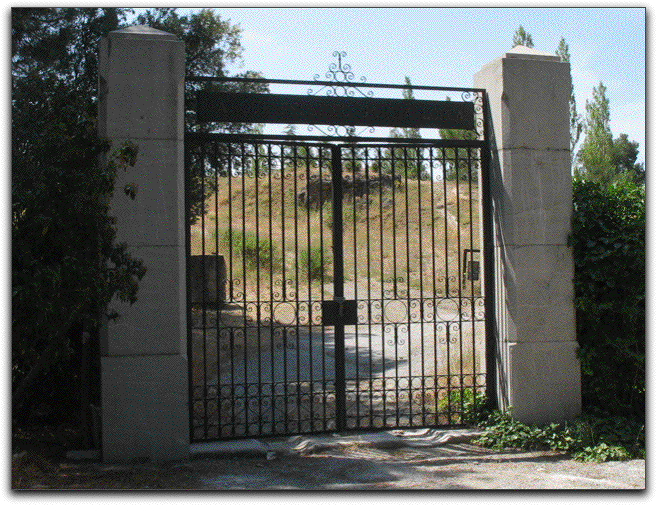
The sign above says simply “Parque Federico Garcia Lorca.” We saw nobody, so we continued up the road. There we found a couple from Germany, another entrance and an indication that the Civil War is not quite over.
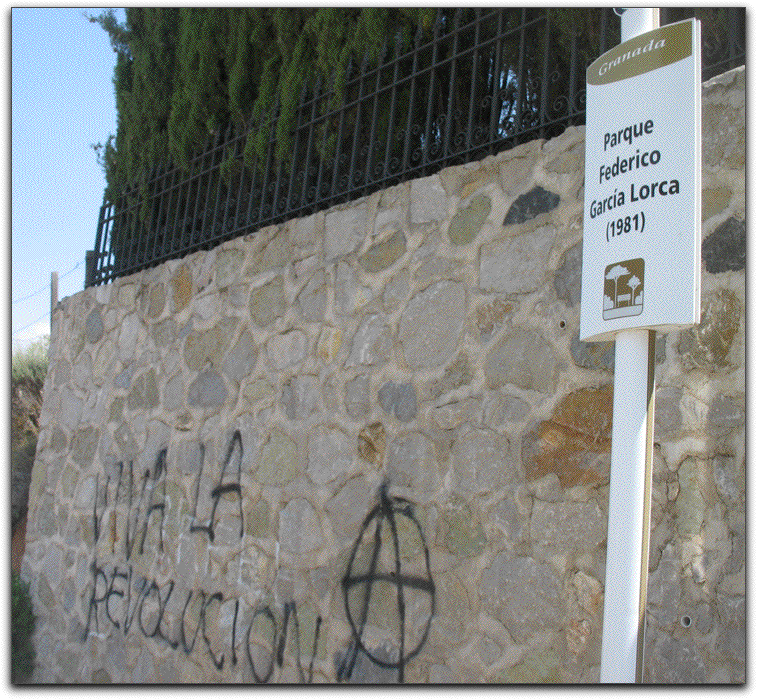
The official statement at the gate
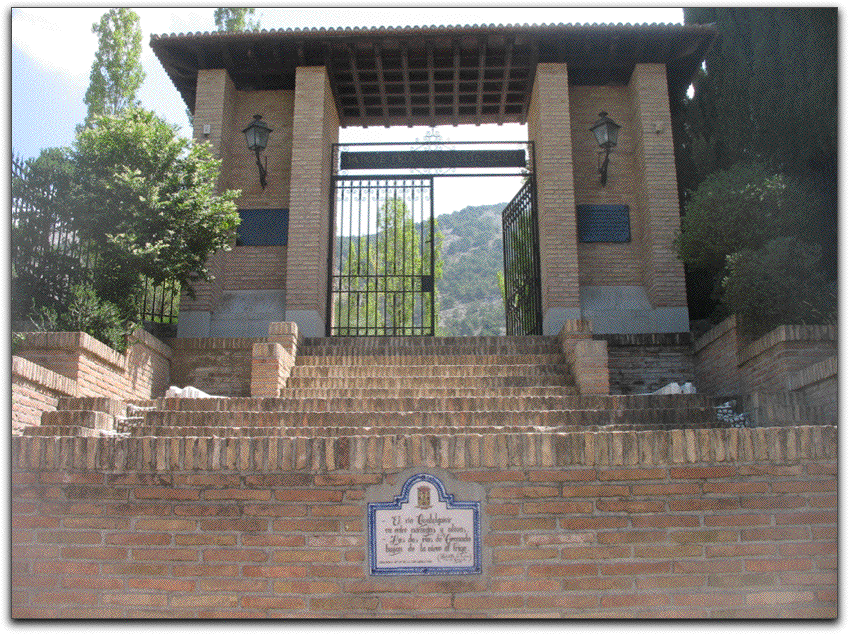
reads:
“The Guadalquivir river wends its way between orange and olive trees. The two rivers of Granada descend from the snow to the wheat.” [from the “baladilla” (little ballad?) of the three rivers of Granada]
Inside, the park looks neglected. Trash is strewn around, the water in the fountain does not flow and weeds grow in the middle of the memorial plaza:
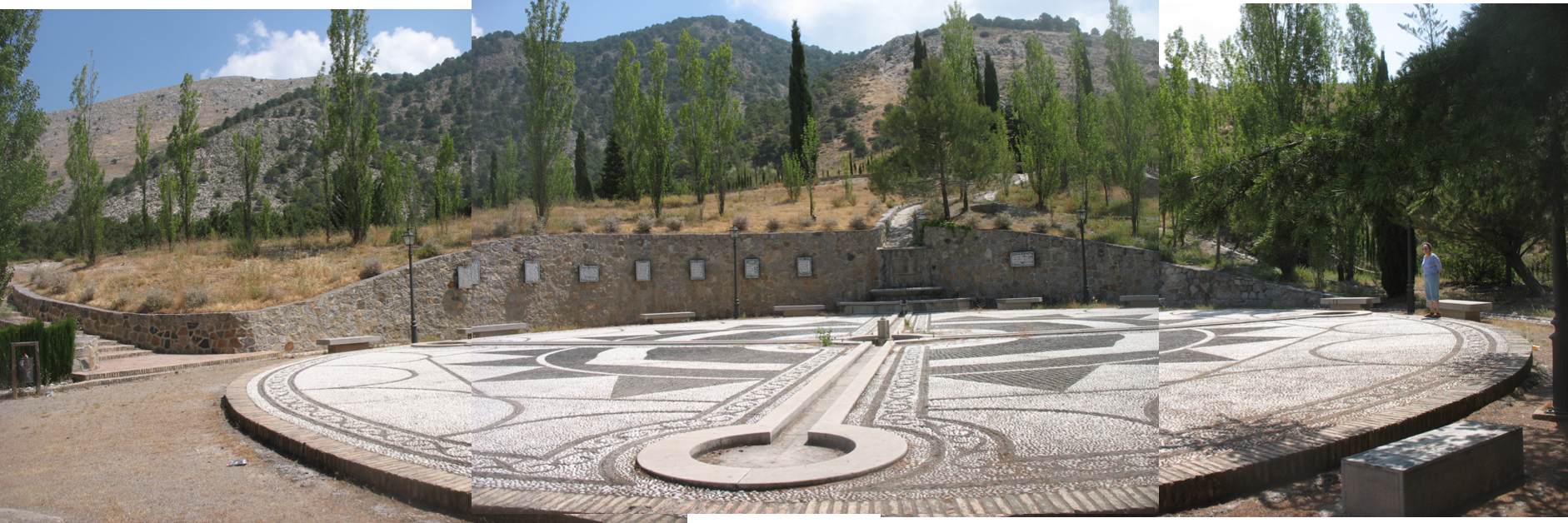
Along the back wall are deteriorating ceramic plaques (similar to those we’ve seen throughout Spain, though, with the pomegranates, these are specifically “Granadan”) with selections from some of Lorca’s poetry:

From the park you can see the city of Granada far below. Lorca is supposedly buried in an unmarked mass grave somewhere up here. It seems that nobody quite knows where it is.
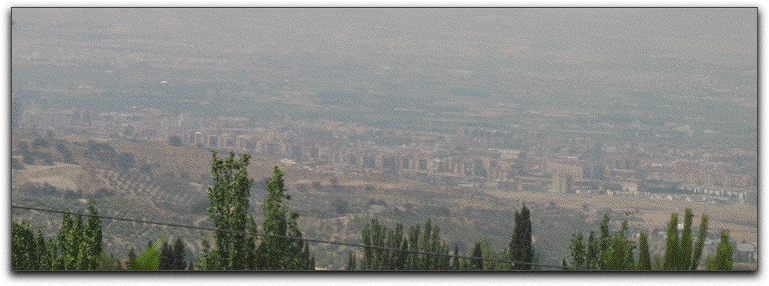
Back in the business center of Afalcar we bought some provisions for the next leg of our trip and found a little ceramics dealer

from whom we bought a few pretty items (our favorite broke on the flight to Israel). We were a bit surprised that they were washed in the local (clearly not drinking?) fountain
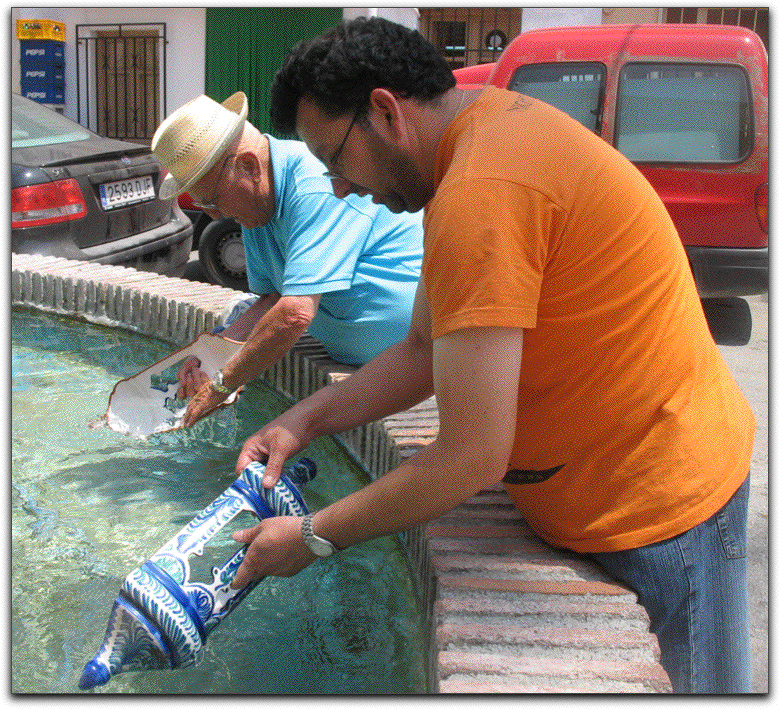
before being wrapped in the local paper. There we happened to notice that the news we had seen in Egypt was confirmed. The mummy of Queen Hatshepsut had been found.
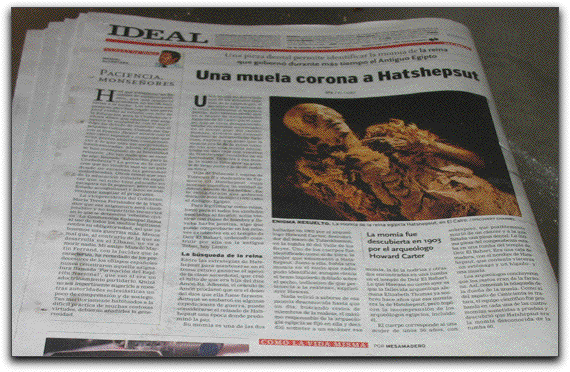
You take the high road and I’ll take the low road
The shortest distance between two points may be the hypotenuse, but that does not mean it’s the shortest time.
There are two routes from Granada to Córdoba. One goes by way of Jaén on the Autovia which is a “limited access highway” and often means the toll road. We took the other, the N432. We have no idea what the other route was like. We’ll have to try that on a future trip. However, this route climbed out of the Granada area into rolling hills covered with olive groves. We’d never seen so many olive trees. Each time we came to the top of a hill, or navigated a large curve in the road we saw more. As we wrote earlier they created what seemed to be an infinite patchwork of olive groves:



Have we ever mentioned here that Mark likes olives and especially olive trees. He likes the way the green and silver of the leaves flicker in the wind. He likes the gnarl of the trunk. He likes the taste of most cured olives, though not “California black” that come in cans. He likes how the center of an olive tree can die and yet the tree continues to offer new sprouts (as we saw in Tzfat). And he especially likes the oil that comes from them and the role it has played in history, especially the Jewish “Holiday of Olives”.
Spanish Lessons While On The Road
Mark had studied Spanish in middle school for one year. Debbie took six years of French in middle and high school. Our Spanish capabilities are what are known in Southern California as “Gardener and Housekeeper Spanish.” We brought with us a little paperback Spanish/English English/Spanish dictionary that we kept in the box between the seats as we drove. When we passed a sign with a word we could not figure out from context or cognate we reached for the dictionary. Some words we could not find. While looking for an appropriate, shaded and off the main highway, spot to have lunch, we pulled off at Alacalá la Real. Remember we are from San Diego, California. Our town was named for San Diego de Alcalá, the name of the mission there, the first mission in Alta California. The Michelin map we use indicates eight towns called “Alcalá.” Later, while doing some research using the Wikipedia we learned that there are a dozen cities sharing the name Alcalá. That may be one of the reasons we could not find the word in our little dictionary—it is a loan word from the Arabic word for fortification (similar to “Alcazar”). The San Diego after whom the city in California is named came from a town called Alcalá de Henares in the Madrid area (we did not visit on this trip) that, not surprisingly has San Diego, California as a sister city.
The ruins of the royal fortress where we ate our lunch are still impressive. The contemporary town is behind the hill in the valley to the right.
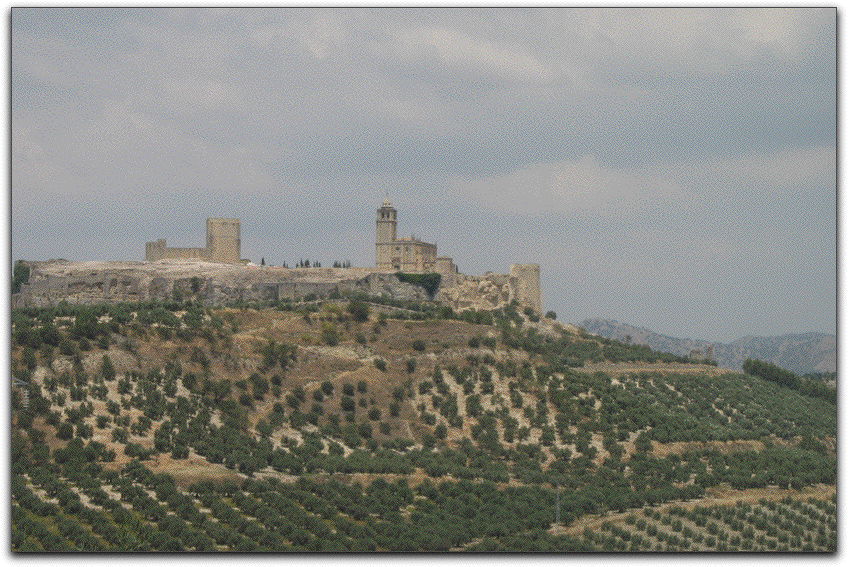
The hills in the area, in the middle of summer, are still covered with flowers.
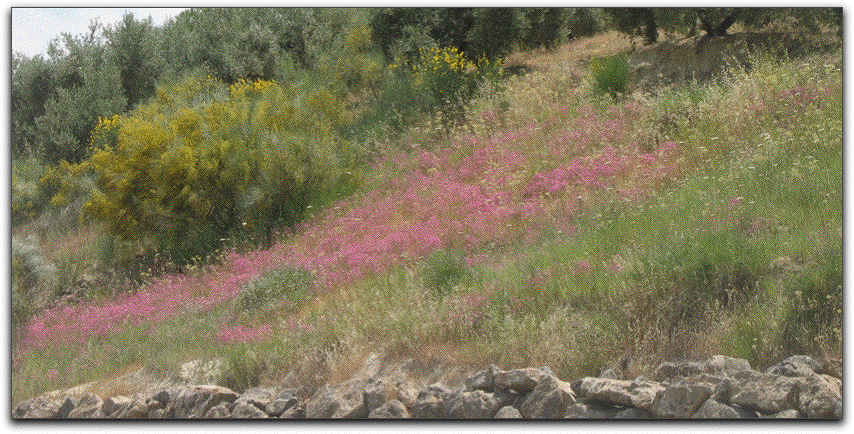

Olives and Poppies, then Cherries and Sunflowers
After lunch we bought a half-kilo of cherries from a roadside stand.
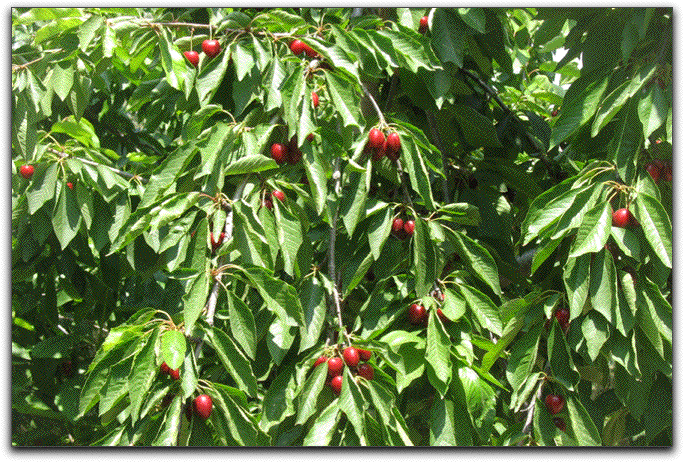
We then drove on to Córdoba. As reported in the portrait for that day, the hillsides approaching the city lit up our day with fields of sunflowers in full bloom.
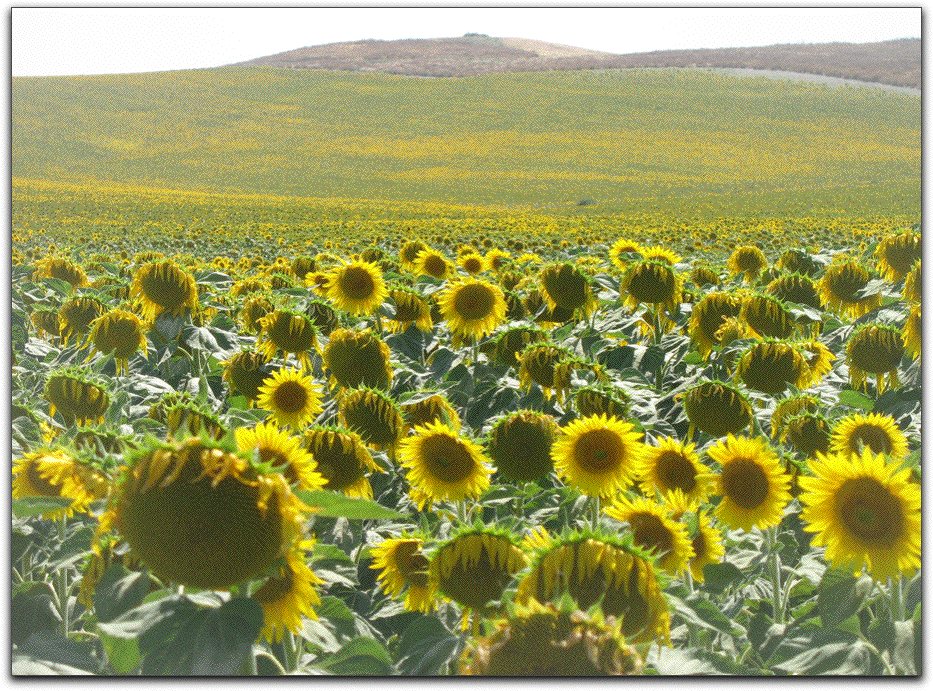
start || back || next




















